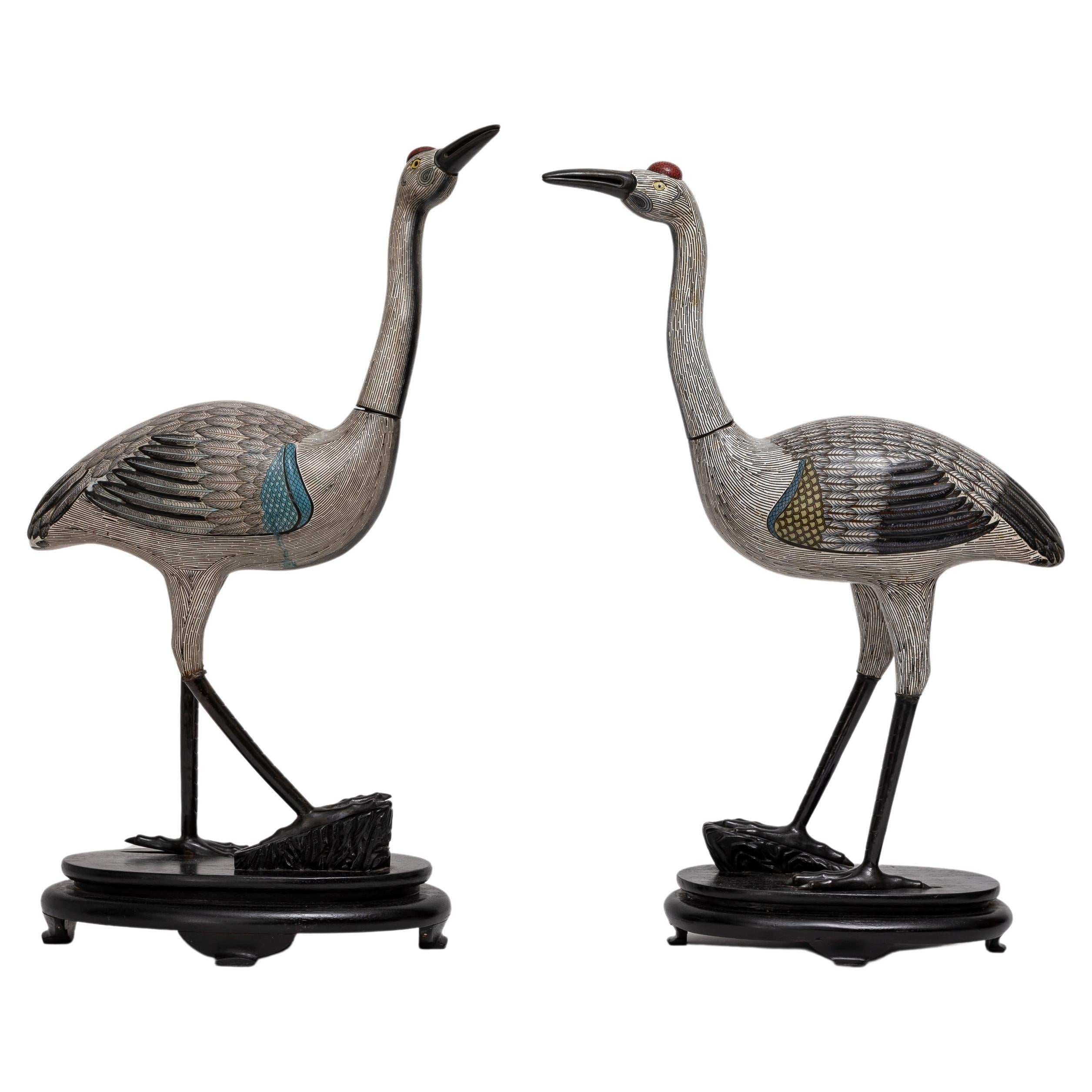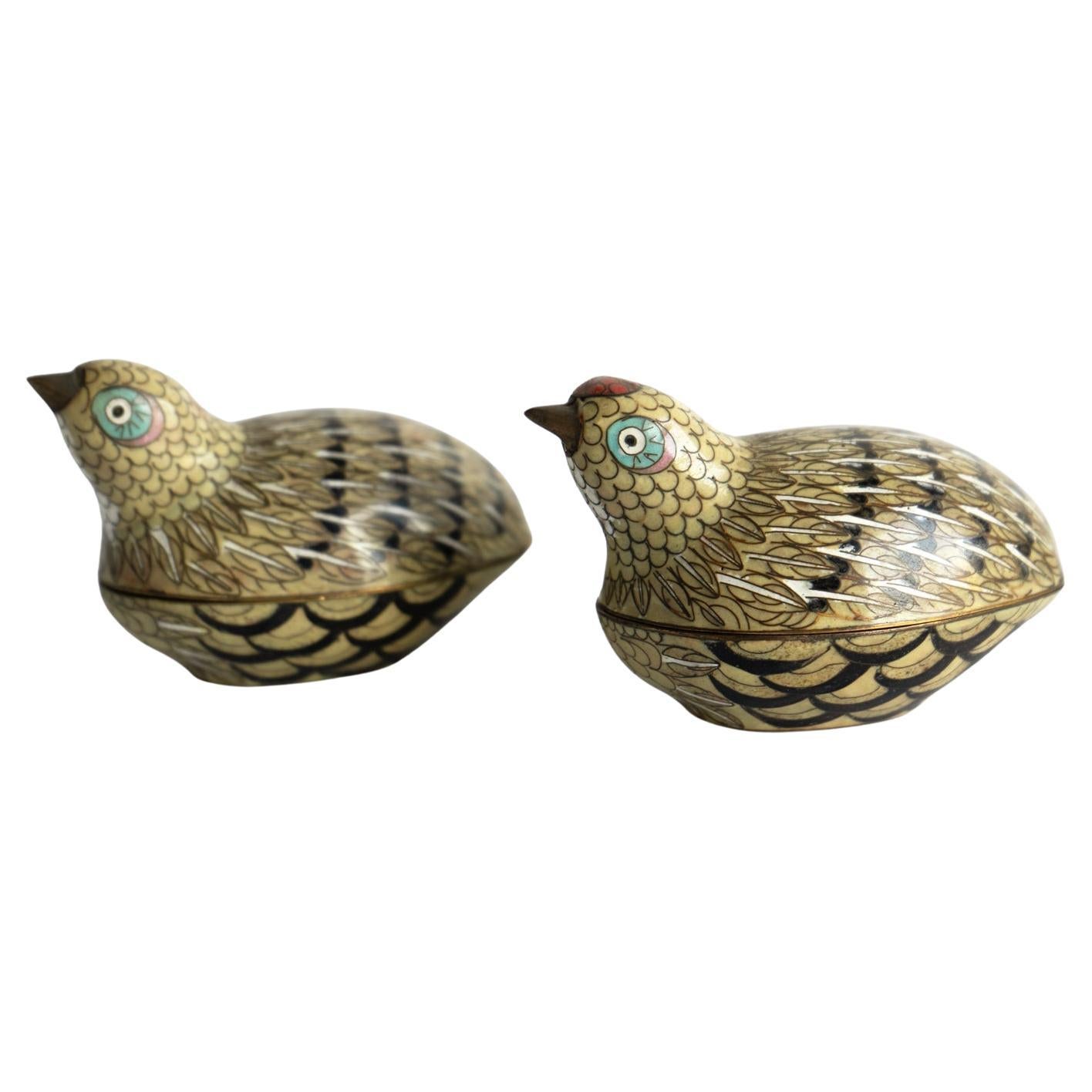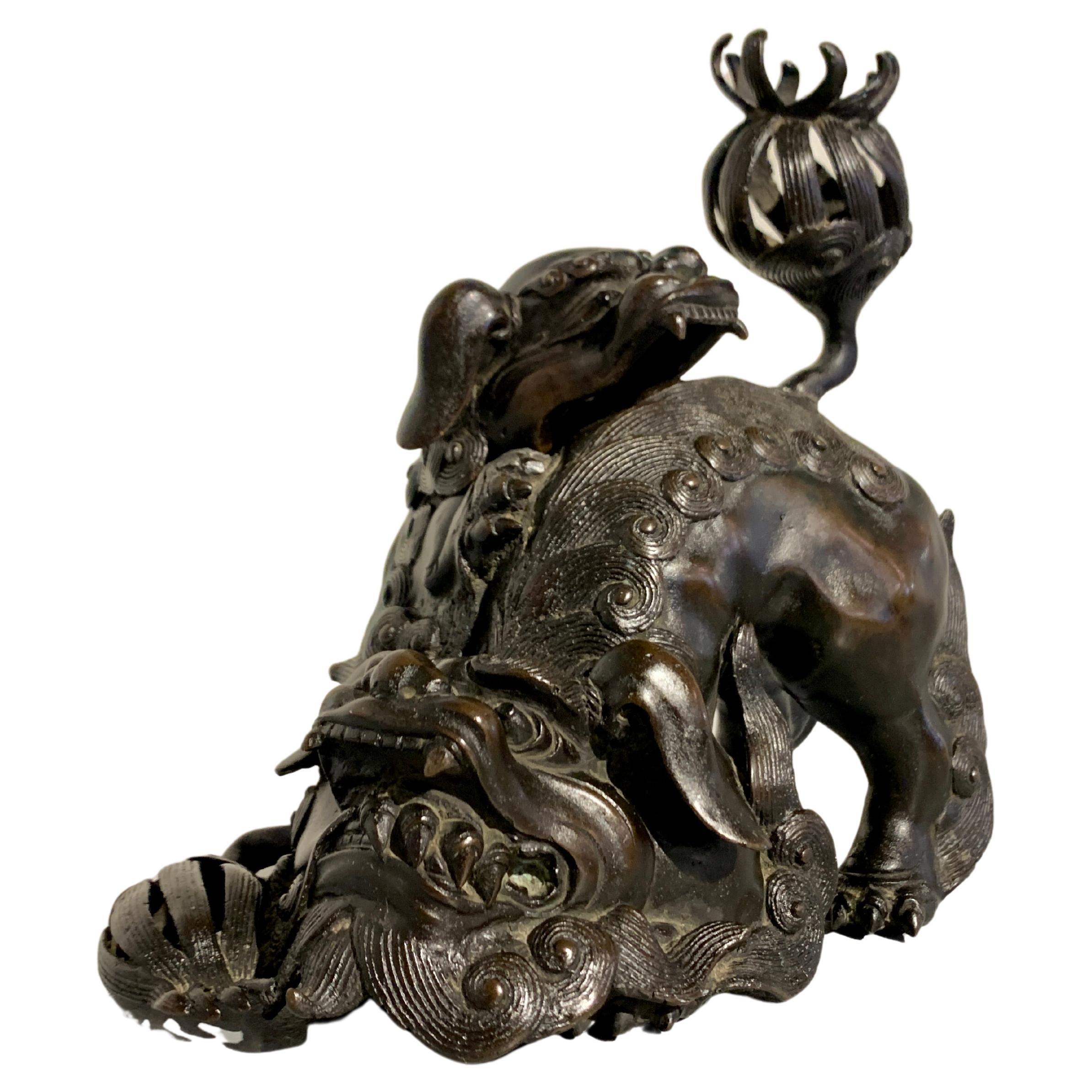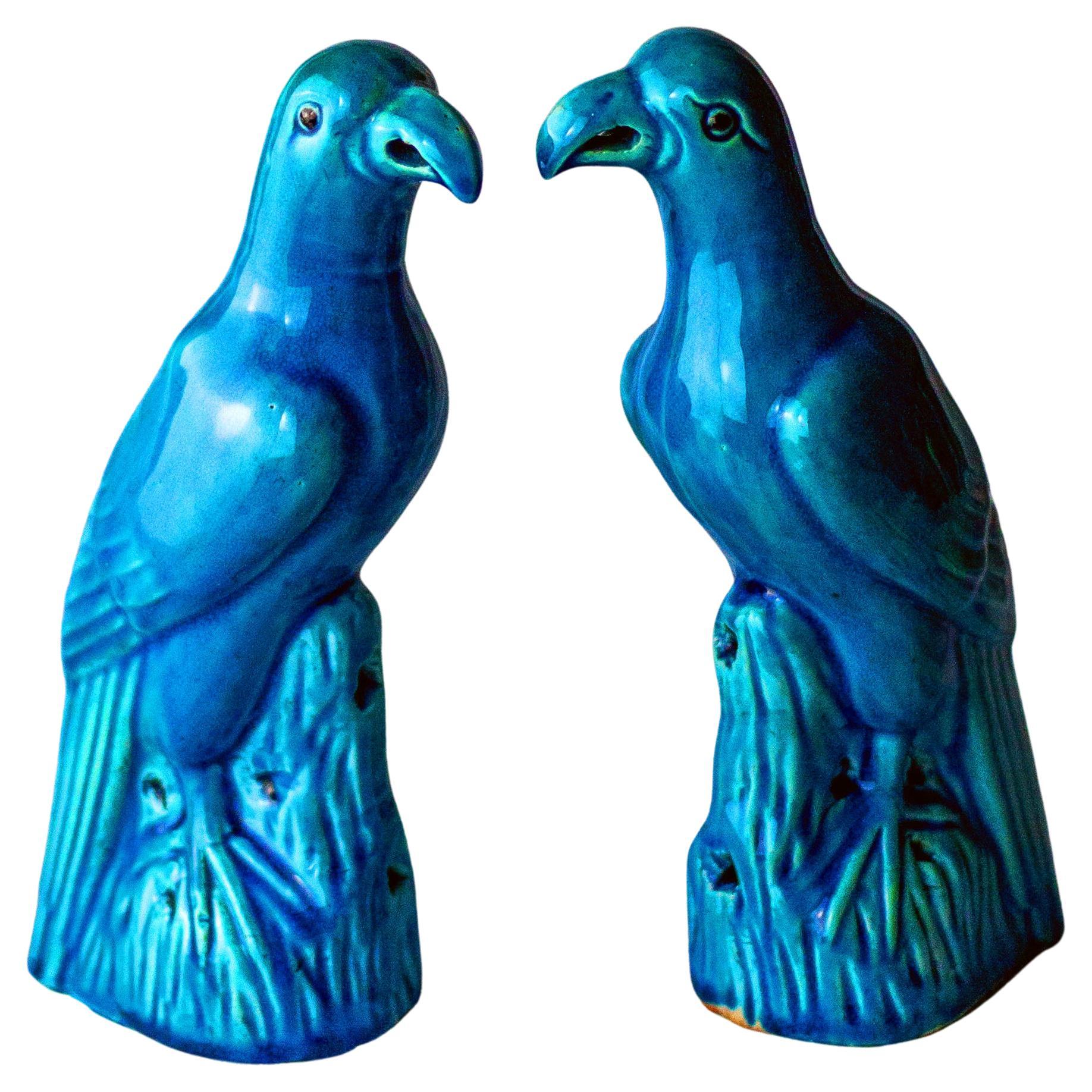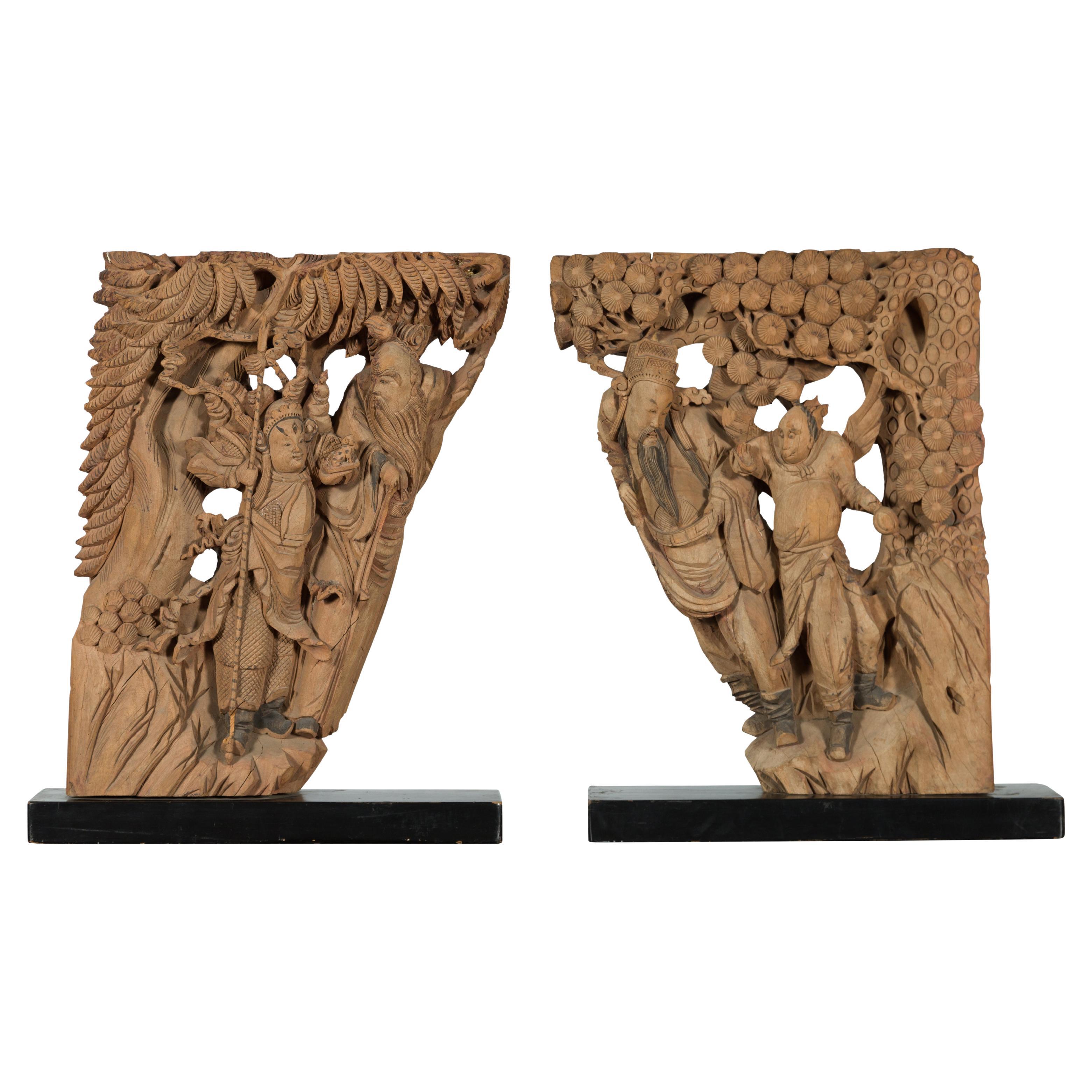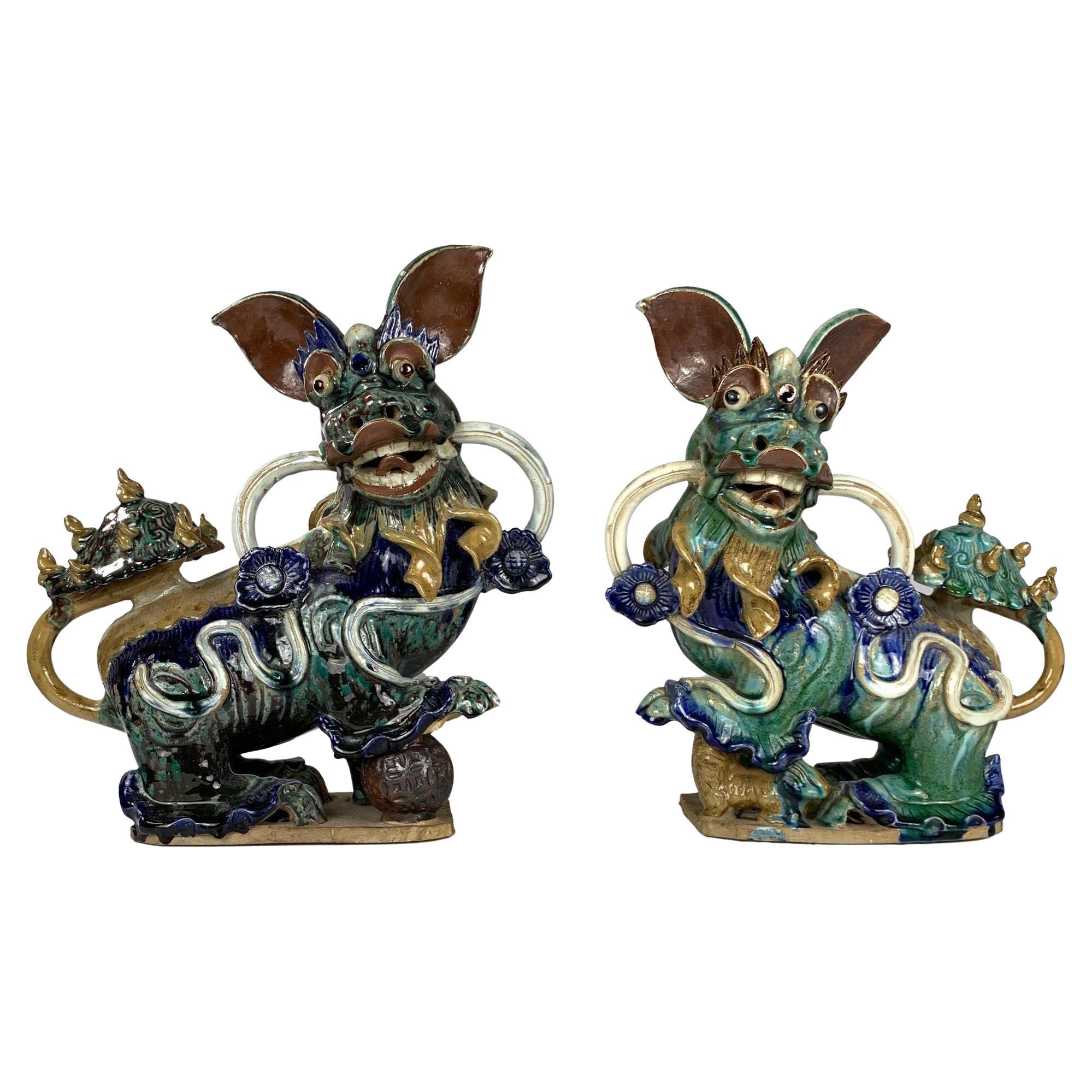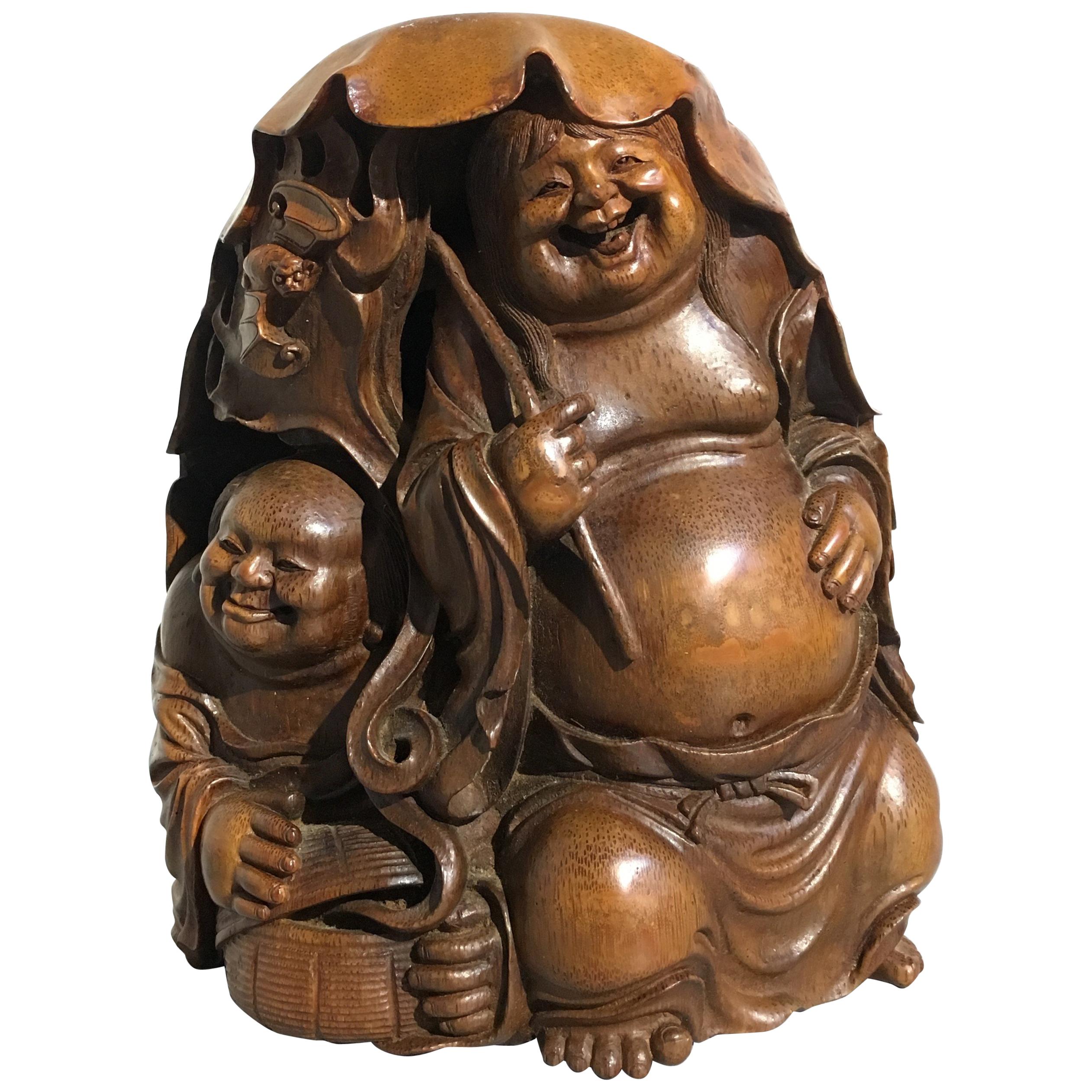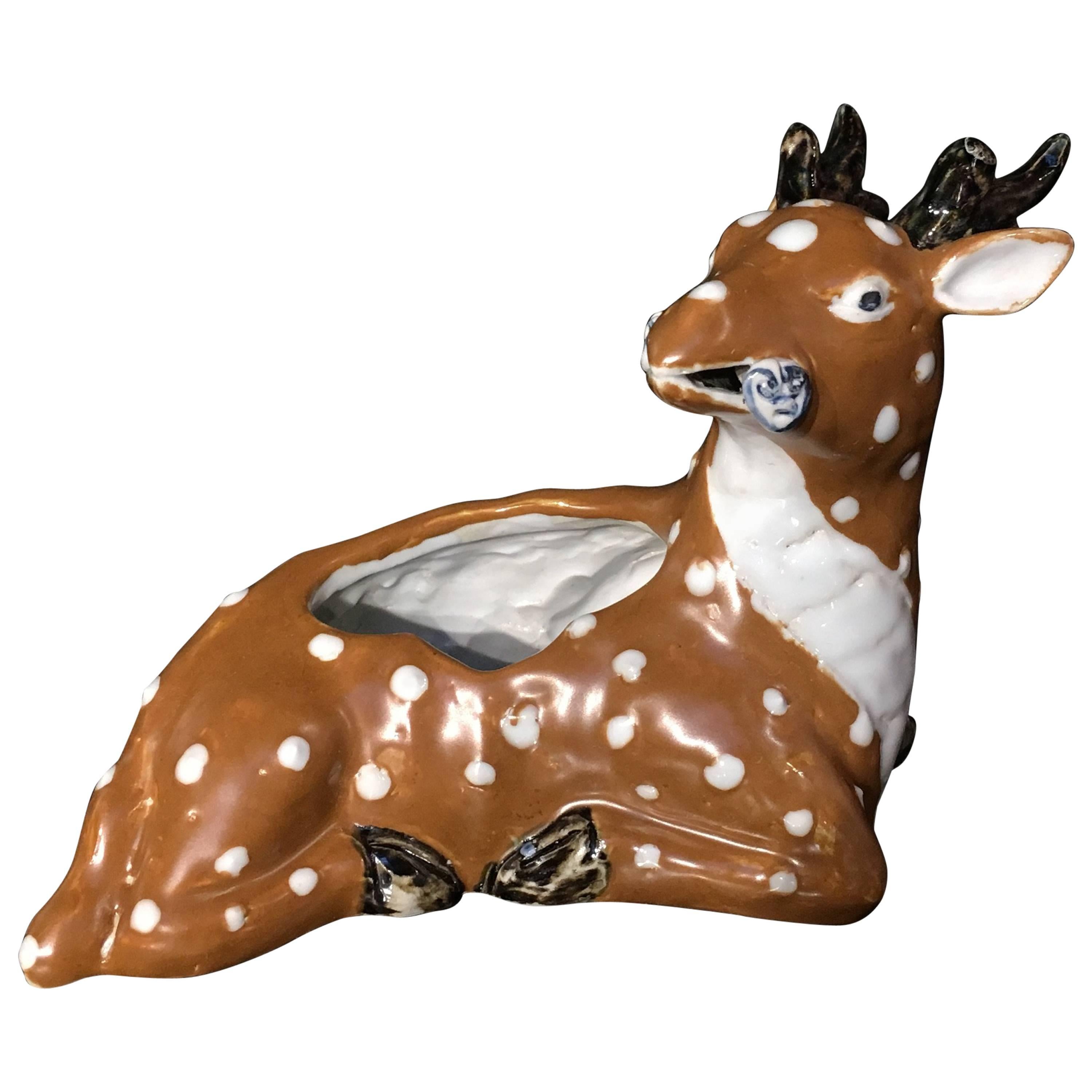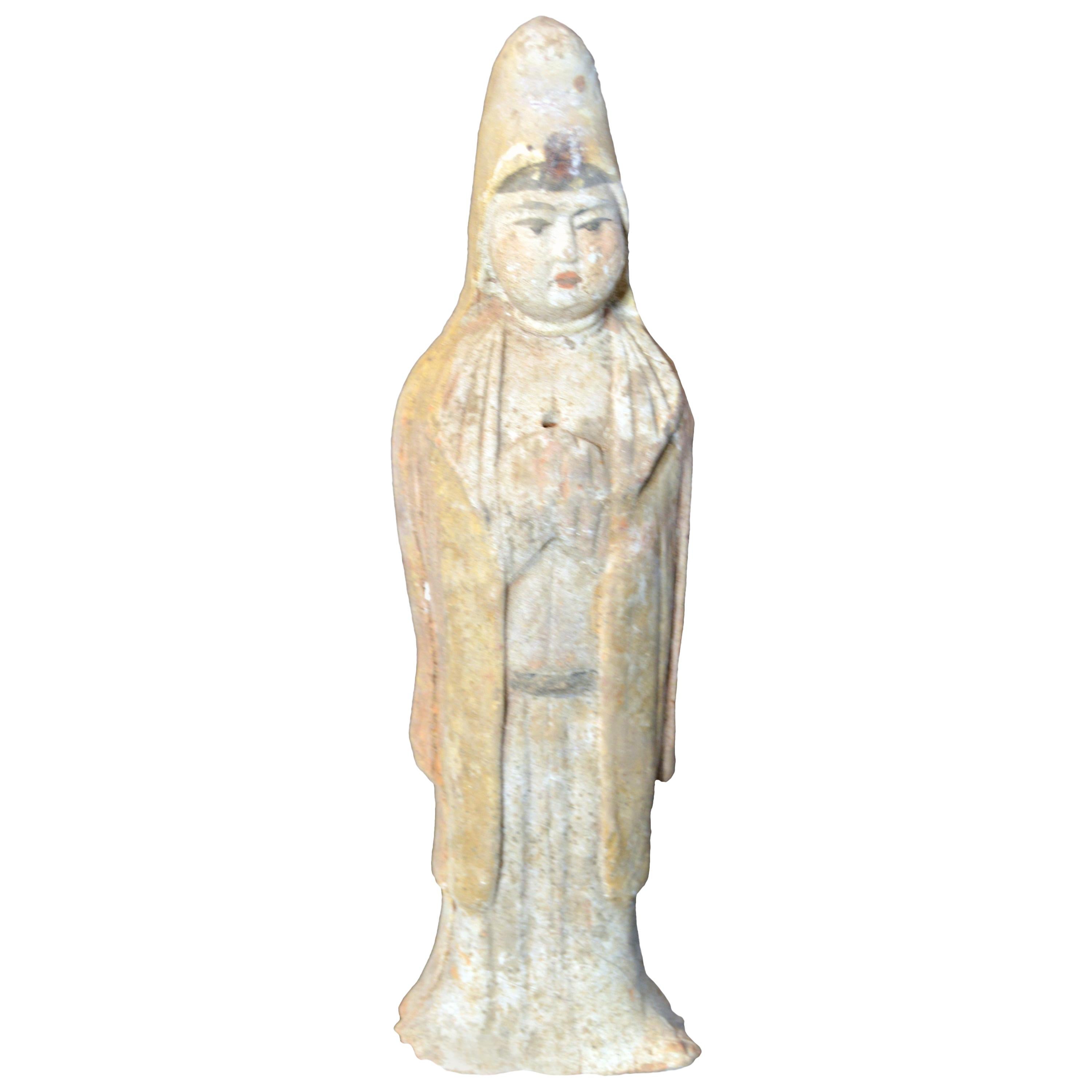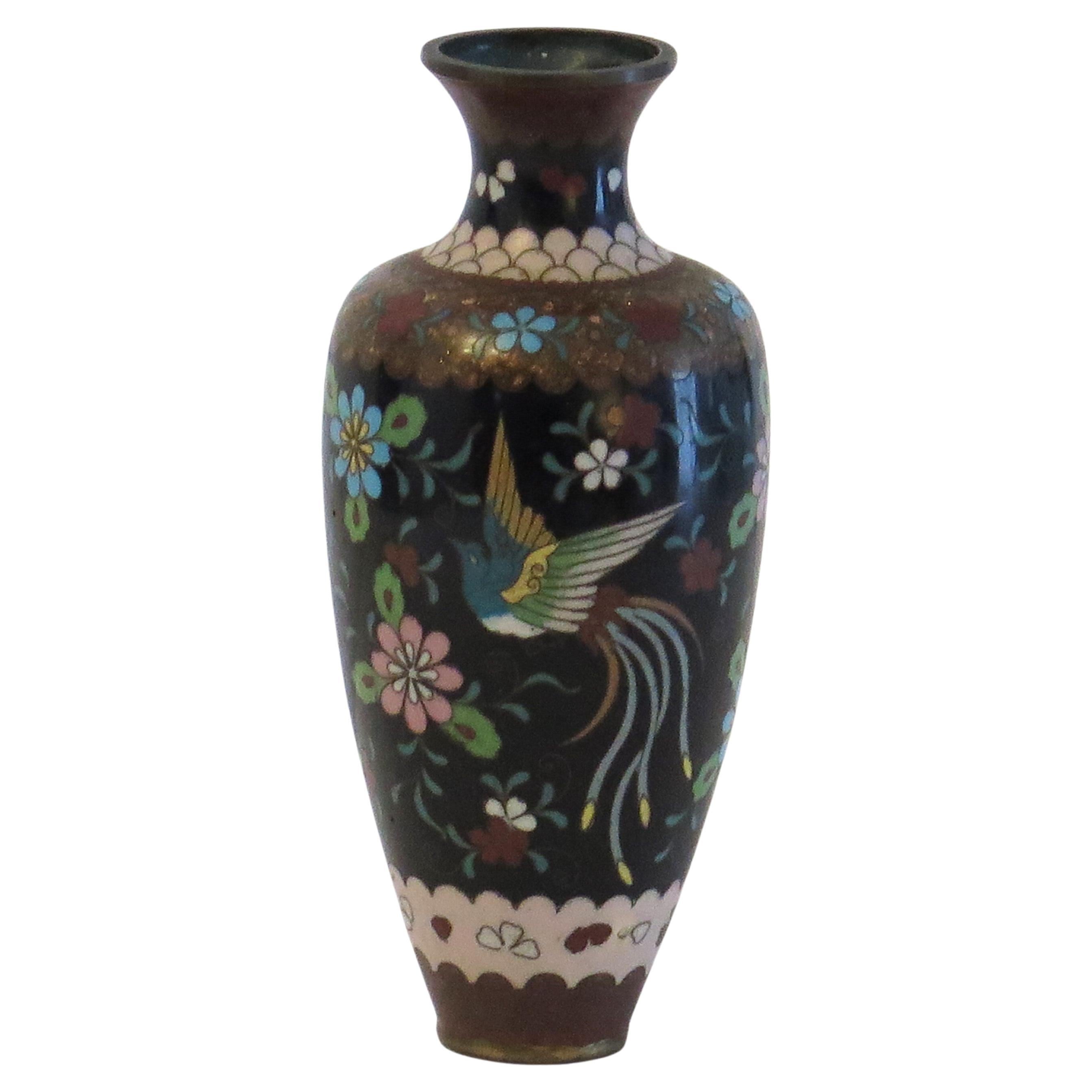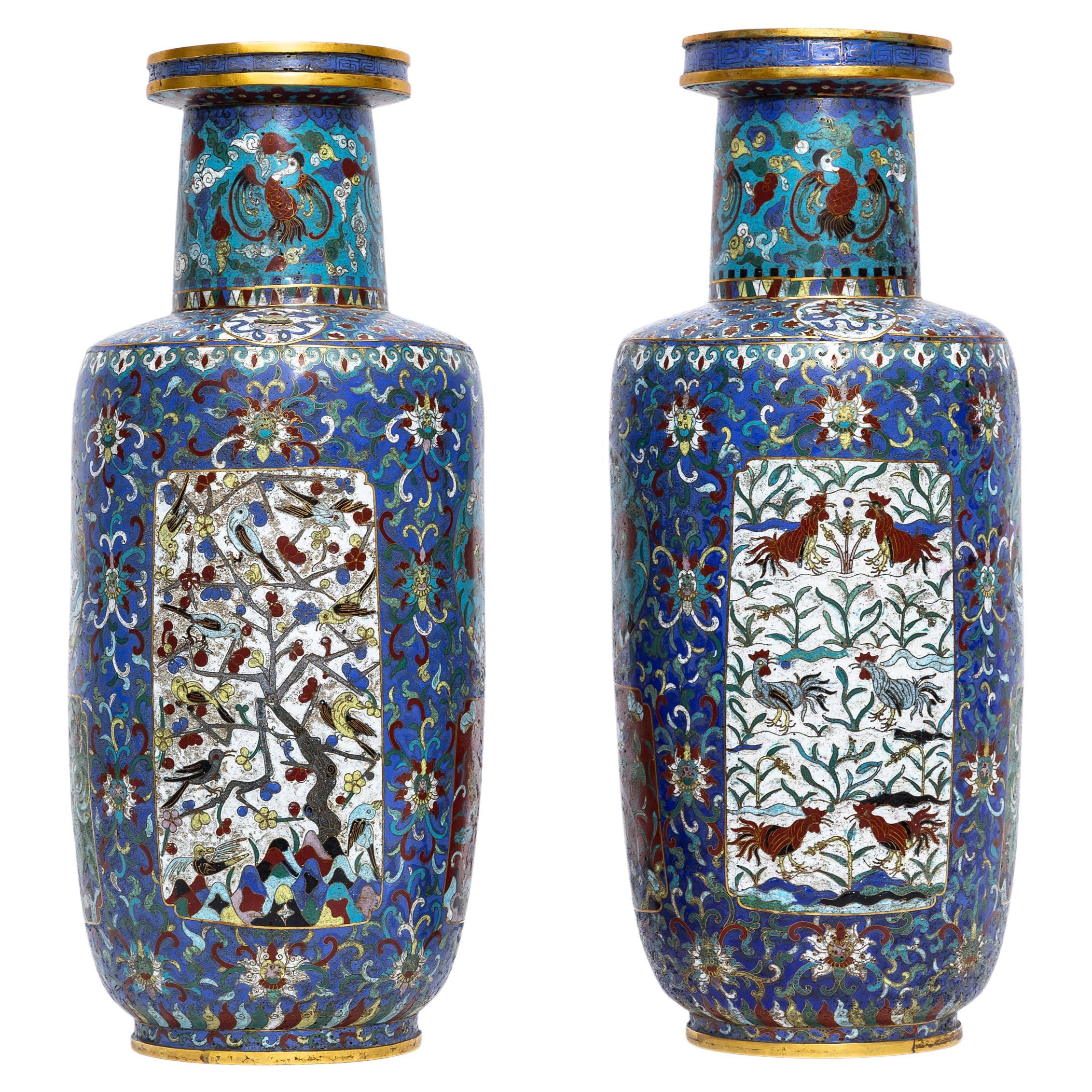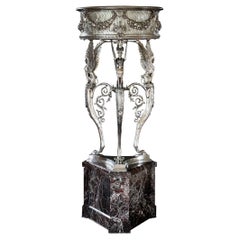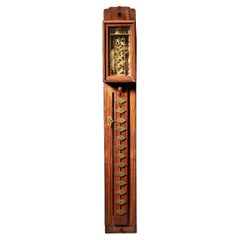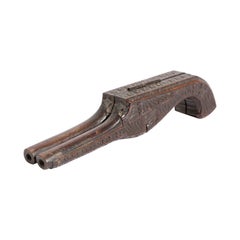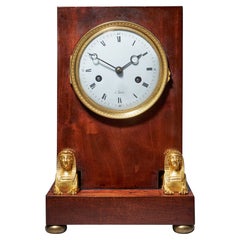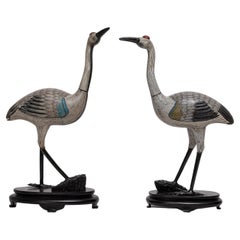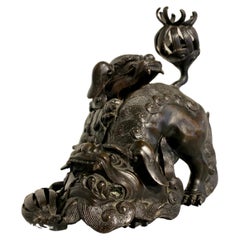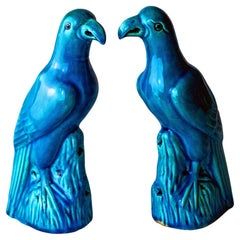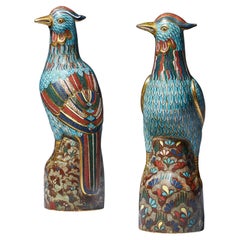
Pair of 19th Century Late Qing Dynasty Chinese Cloisonné Phoenix Figures
View Similar Items
Want more images or videos?
Request additional images or videos from the seller
1 of 9
Pair of 19th Century Late Qing Dynasty Chinese Cloisonné Phoenix Figures
About the Item
- Dimensions:Height: 9.26 in (23.5 cm)Width: 2.76 in (7 cm)Depth: 3.15 in (8 cm)
- Style:Qing (Of the Period)
- Materials and Techniques:
- Place of Origin:
- Period:
- Date of Manufacture:1850
- Condition:Wear consistent with age and use.
- Seller Location:Oxfordshire, GB
- Reference Number:1stDibs: LU4936227399952
About the Seller
5.0
Recognized Seller
These prestigious sellers are industry leaders and represent the highest echelon for item quality and design.
Gold Seller
Premium sellers maintaining a 4.3+ rating and 24-hour response times
1stDibs seller since 2019
24 sales on 1stDibs
Typical response time: 10 hours
Associations
LAPADA - The Association of Arts & Antiques Dealers
Authenticity Guarantee
In the unlikely event there’s an issue with an item’s authenticity, contact us within 1 year for a full refund. DetailsMoney-Back Guarantee
If your item is not as described, is damaged in transit, or does not arrive, contact us within 7 days for a full refund. Details24-Hour Cancellation
You have a 24-hour grace period in which to reconsider your purchase, with no questions asked.Vetted Professional Sellers
Our world-class sellers must adhere to strict standards for service and quality, maintaining the integrity of our listings.Price-Match Guarantee
If you find that a seller listed the same item for a lower price elsewhere, we’ll match it.Trusted Global Delivery
Our best-in-class carrier network provides specialized shipping options worldwide, including custom delivery.More From This Seller
View All19th Century Silvered Bronze Athénienne Jardinière by Ferdinand Barbedienne
By Ferdinand Barbedienne
Located in Oxfordshire, United Kingdom
A French silvered-bronze athénienne by Ferdinand Barbedienne, Paris, last quarter 19th century with a revolving liner, the frieze applied with bucrania suspending ribbon-tied berried laurel swags above a border of bellflowers on a stippled ground above three seated female sphinxes issuing stylised foliage and scrolls on lion monopodia cast with the mask of Hercules, scrolling foliage and anthemions joined by stretchers, raised on a concave-sided triform marble base on a further thin silvered-bronze base, inscribed to the tripod base 'F. BARBEDIENNE'
Measures: 103.3cm. high, 41.5cm. diameter; 3ft. 4 3/8 in, 1ft. 4 1/4.
This impressive athénienne is a key reminder of the longevity of a particular model and design’s success from Antiquity through to the 19th century and up until this day. Typically known as the ‘Trépied du Temple d’Isis’, this athénienne is designed after the Roman antique originally found at Pompeii and now at the Museo Archeologico Nazionale, Naples (fig.1). From being for example an inspiration for the baptismal font of Napoléon’s son in 1811, this model was the inspiration to many highly skilled makers throughout the 19thcentury such as the Manfredini brothers from Milan and of course the Parisian well-established bronze founder Ferdinand Barbedienne who executed the present example.
The Temple of Isis was a Roman temple dedicated to the Egyptian goddess Isis and was among one of the first discoveries during the excavation of Pompeii in 1764. Certainly considered as one of the most elegant examples of antique tripods, the existence of this model was then popularized to the rest of Europe via prints, one of the first being by Giovanni Battista Piranesi in 1779. This type of tripod was also popularised by an engraving in C. Percier and P. Fontaine’s, Receuil de Décorations Intérieures of 1801. Interestingly, there is also a watercolour now in the Musée Carnavalet, Paris, showing this type of tripod displayed at the 1801 Exposition des Produits de L’Industrie in the Louvre.
The passion for Greek and Roman Art in the 19th century.
The discovery of Pompeii and Herculaneum around the middle of the 18th century gave rise to a new passion for Antiquity and the excavated masterpieces renewed the repertoire of fine and decorative arts and served as models for Neoclassicism. Members of the aristocracy as well as connoisseurs, particularly in England, completed their education by undertaking a ‘Grand Tour’ of Italy and often fell victim to the recently unearthed Greek and Roman artefacts...
Category
Antique 19th Century French Grand Tour Planters, Cachepots and Jardinières
Materials
Marble, Silver Plate, Bronze
Late Edo Period 19th Century Japanese Pillar Clock, Shaku-Dokei, C. 1820
Located in Oxfordshire, United Kingdom
Elegant Japanese pillar clock, 'SHAKU-DOKEI', c. 1820
The very fine 30-hour, weight-driven movement is constructed between bars and consists ...
Category
Antique Early 19th Century Japanese Edo Wall Clocks
Materials
Hardwood
Fine and Rare Early 19th Century Carved Bootjack in the Form of a Pistol
Located in Oxfordshire, United Kingdom
A fine and rare !9th Century hand carved antique treen bootjack, to remove riding boots, in the unusual form of a pistol.
This is a rare find and unfolds to form a bootjack with be...
Category
Antique 19th Century Antiquities
Materials
Beech
19th Century French Flame Mahogany Napoleon Empire Period Mantel Clock
By Breguet a Paris
Located in Oxfordshire, United Kingdom
A superb 19th century French Flame Mahogany Napoleon Empire Period Egyptian style Mantel Clock
This clock was produced in the Fr...
Category
Antique 19th Century French Empire Mantel Clocks
Materials
Brass
19th Century Grand Tour Micro Mosaic Tablet Depicting Italian Architecture
Located in Oxfordshire, United Kingdom
A fine mid-19th century serpentine grand tour micro mosaic tablet or paperweight of the iconic St Peter's Vatican, The Colosseum of Rome, The Pantheon, The Ruins of The Roman Forum a...
Category
Antique Early 19th Century Italian Grand Tour Decorative Art
Materials
Belgian Black Marble
19th Century Eight-Day Miniature Gilt-Brass Carriage Clock with Original Case
Located in Oxfordshire, United Kingdom
A charming late 19th century French engraved miniature oval carriage clock with original travelling case.
The petite miniature oval gilt brass ...
Category
Antique 19th Century French Victorian Carriage Clocks and Travel Clocks
Materials
Brass
You May Also Like
A Marvelous Pair of Chinese Cloisonné Figures of Cranes on Stands, Qing Dynasty
Located in New York, NY
A Marvelous and Large Pair of Chinese Cloisonné Figures of Cranes on Stands. Step into the captivating world of Chinese artistry with this remarkabl...
Category
Early 20th Century Chinese Qing Animal Sculptures
Materials
Bronze
Pair Of Antique Chinese Cloisonne Quail Boxes, Qing Dynasty, Late 19Th Century
Located in Bristol, GB
ANTIQUE CHINESE CLOISONNE TRINKET BOXES
Extremely tactile little boxes in the form of a male and female quail with polychrome enamels.
Very characterful and charming depiction of t...
Category
Antique Late 19th Century Chinese Qing Decorative Boxes
Materials
Enamel
Chinese Bronze Fighting Foo Lions Censer, Qing Dynasty, Late 19th Century, China
Located in Austin, TX
A fantastic Chinese cast bronze censer in the form of two Buddhistic lions play fighting, late Qing Dynasty, late 19th century, China.
The censer formed as a pair of Buddhistic li...
Category
Antique Early 1900s Chinese Qing Sculptures and Carvings
Materials
Bronze
19th Century Chinese Qing Dynasty Turquoise Glazed Parrots
Located in Bloomfield Hills, MI
A pair of parrots in China symbolizes affection, fidelity, and deep, enduring love. The parrot is also a powerful symbol of opportunity and the bearer of good news, drawing in positi...
Category
Antique 19th Century Chinese Qing Animal Sculptures
Materials
Pottery
Pair of 19th Century Chinese Qing Dynasty Hand-Carved Wooden Temple Corbels
Located in Yonkers, NY
A pair of Chinese Qing Dynasty period hand-carved temple corbels from the 19th century, mounted on black bases. Created in China during the Qing Dynasty...
Category
Antique 19th Century Chinese Qing Figurative Sculptures
Materials
Wood
$6,400 Sale Price / set
20% Off
Pair Large Antique Chinese Stoneware Guardian Lions Qing Dynasty 19th Century
Located in Katonah, NY
These magnificent Chinese temple lions are true works of art, masterfully crafted with incredible attention to detail. The bulging eyes, sharp ears, open mouth, and fluttering mane are expertly rendered, creating a pair of stunning creatures that are truly alive with energy and movement.
The expressive faces of these lions are captivating, and the fact that they are a "true" pair, meaning a male and a female facing each other, adds to the sense of interaction and action.
These lions are made of stoneware and painted in the traditional Chinese sancai three-color glaze on a light brown ground; dating to the late Qing period, they are covered in rich green, blue, and amber glazes. The intricate detailing and rich colors are breathtaking, making these lions a treasure.
Temple lions, also known as lion dogs, are celebrated for their auspicious symbolism. They are believed to protect the peace and prosperity of one's home. These lions are beautiful works of art that bring good luck and prosperity to the homes they are placed in.
Dimensions: 17" Height x 16" Length x 6 1/2" Depth.
Condition: Excellent
Price: $5,800
Background of Chinese Temple Lions:
Chinese guardian lions...
Category
Antique Late 19th Century Chinese Qing Ceramics
Materials
Stoneware
Recently Viewed
View AllMore Ways To Browse
Cloisonne Figures
Yin Yang Brass
Pair Of Chinese Cloisonne Figures
Cloisonne Animals Figures Pairs
Bull Statue
Ceramic Elephants Pair
Ceramic Owls
Deco Terrier
Deer Fawn
Eagle And Serpent
French Bulldog Sculpture
Glass Bulldog
Horse And Jockey Bronze
Ibex Sculpture
Japanese Inro Box
Japanese Inro Boxes
Jere Sculpture Birds
Lalanne Sheep
